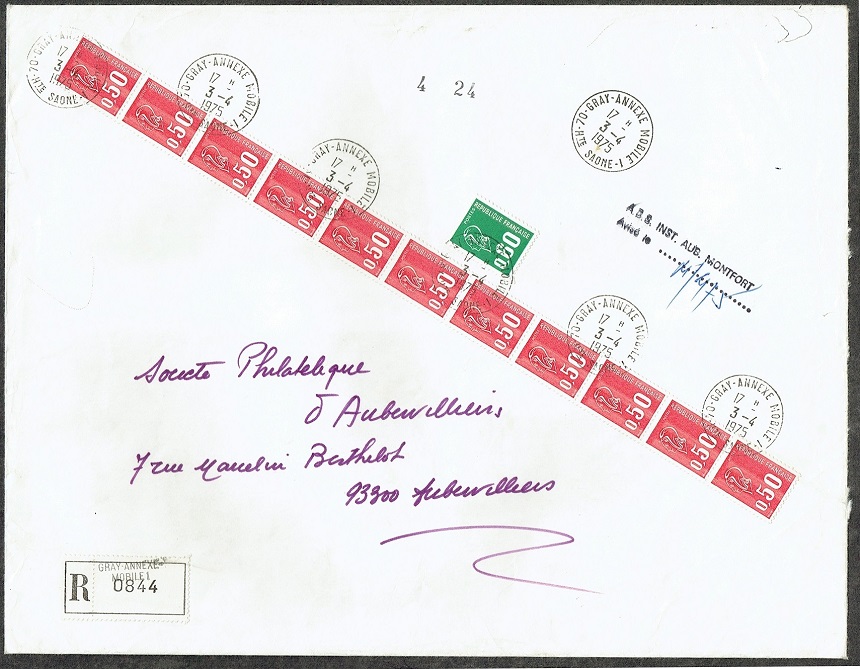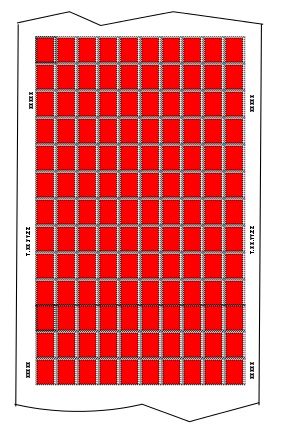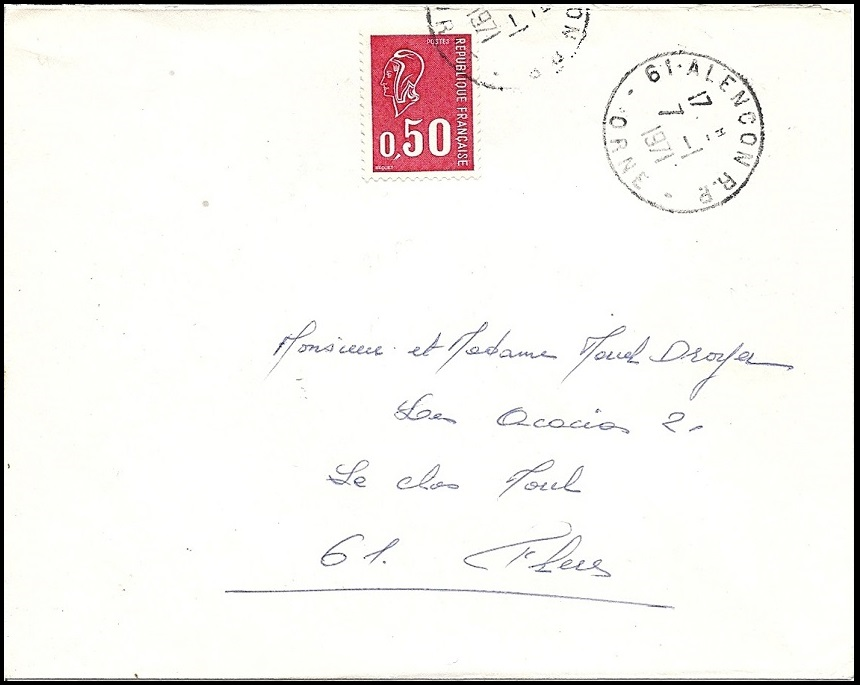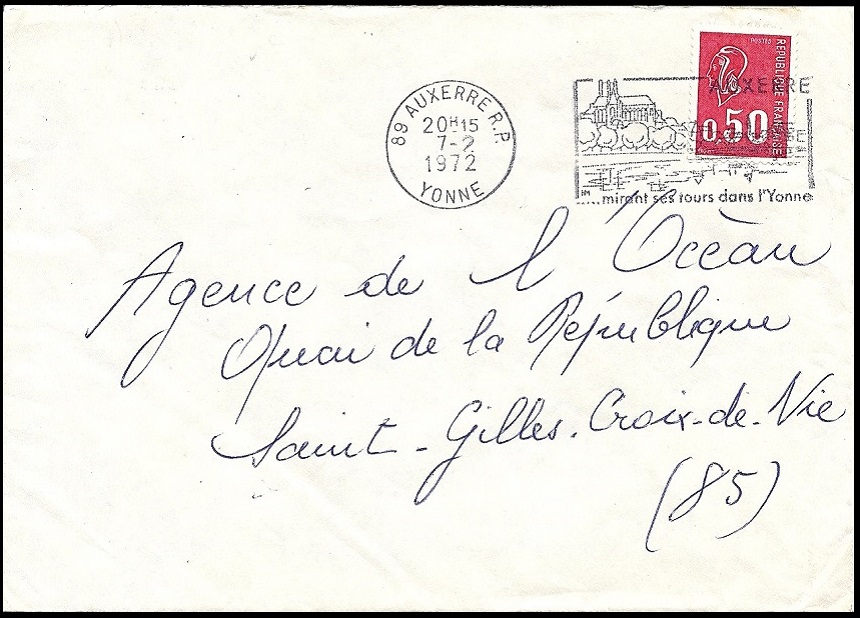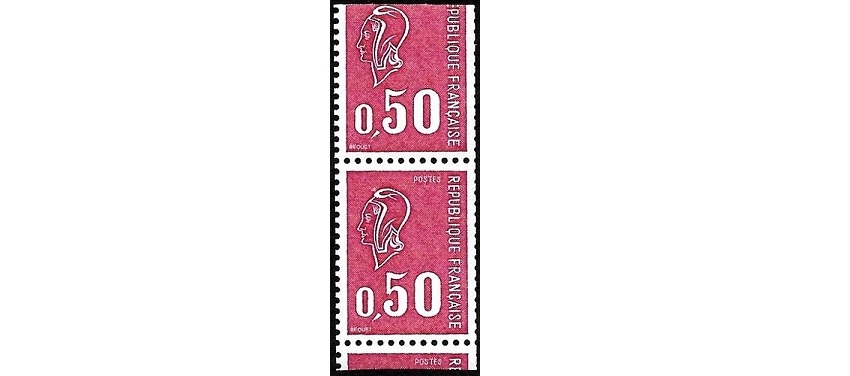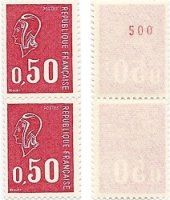
Processing stamps into coil form
The main stages for processing coil stamps in intaglio printing are the following ones:
- Elaboration of a ten stamps width roll on a TD6 press, by printing stamps, phosphor bands (if any) and numbers on the reverse side of the stamps. One over ten stamps wears a red number printed on its reverse, on the gum, to facilitate the accounting of the 1000-stamp size strips (it is the case for all coil stamps since 1962 in France). The numbers and the registration information are affixed by the TD6 press just after the printing of the stamps;
- Eleven knives on the coiling machine slit apart the ten rows of stamps and trim the margin of the outside rows as the roll is then wound. A mark of cutting is printed on the roll of stamps every 33 stamps (corresponding to a rotation of the cylinder) and allows to verify the cut of roll;
- Creation of the coil of 1000 stamps around a core. Every coil is provided with a guarding strip such as follows:
The principle of the printing process of coils is represented on the following figure:
We can see below the imprimatur sheet of the 0,50F Marianne de Béquet stamp without phosphor bands and the imprimatur sheet of the 0,50F Marianne de Béquet stamp with three phosphor bands kept at the Museum of the Post Office:
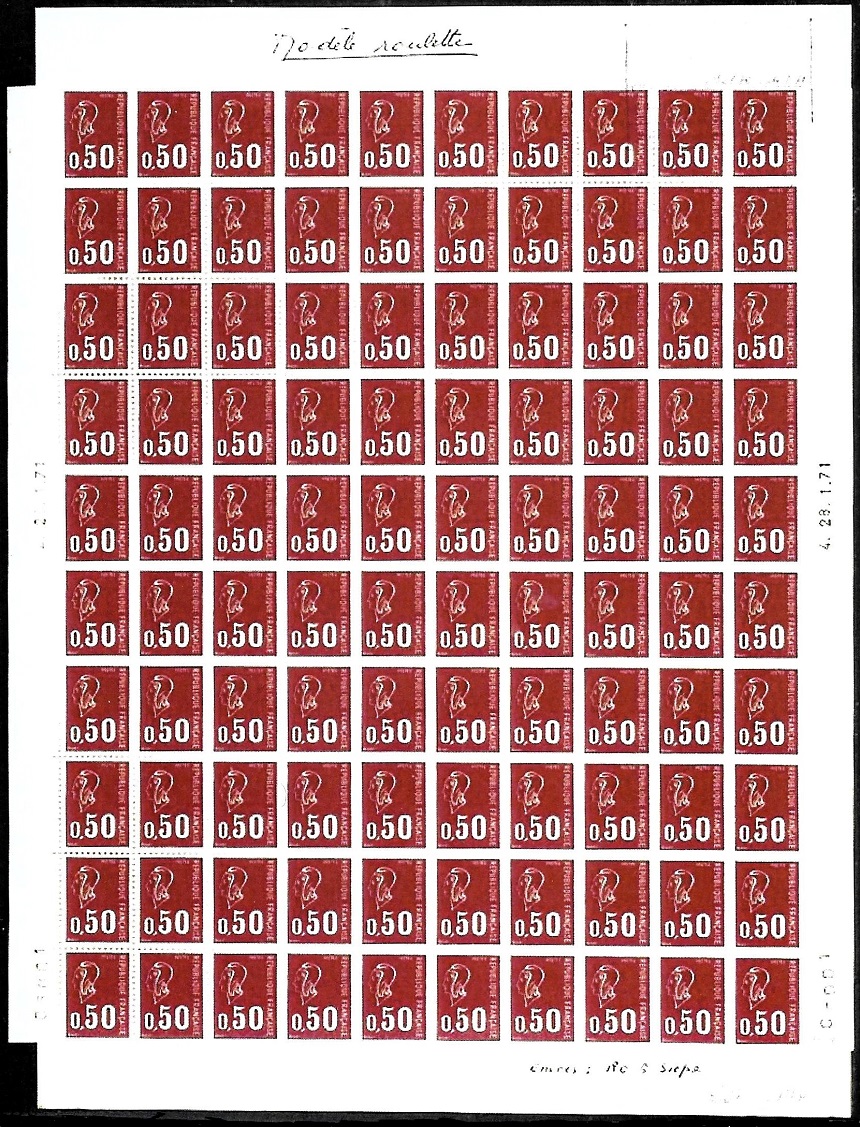
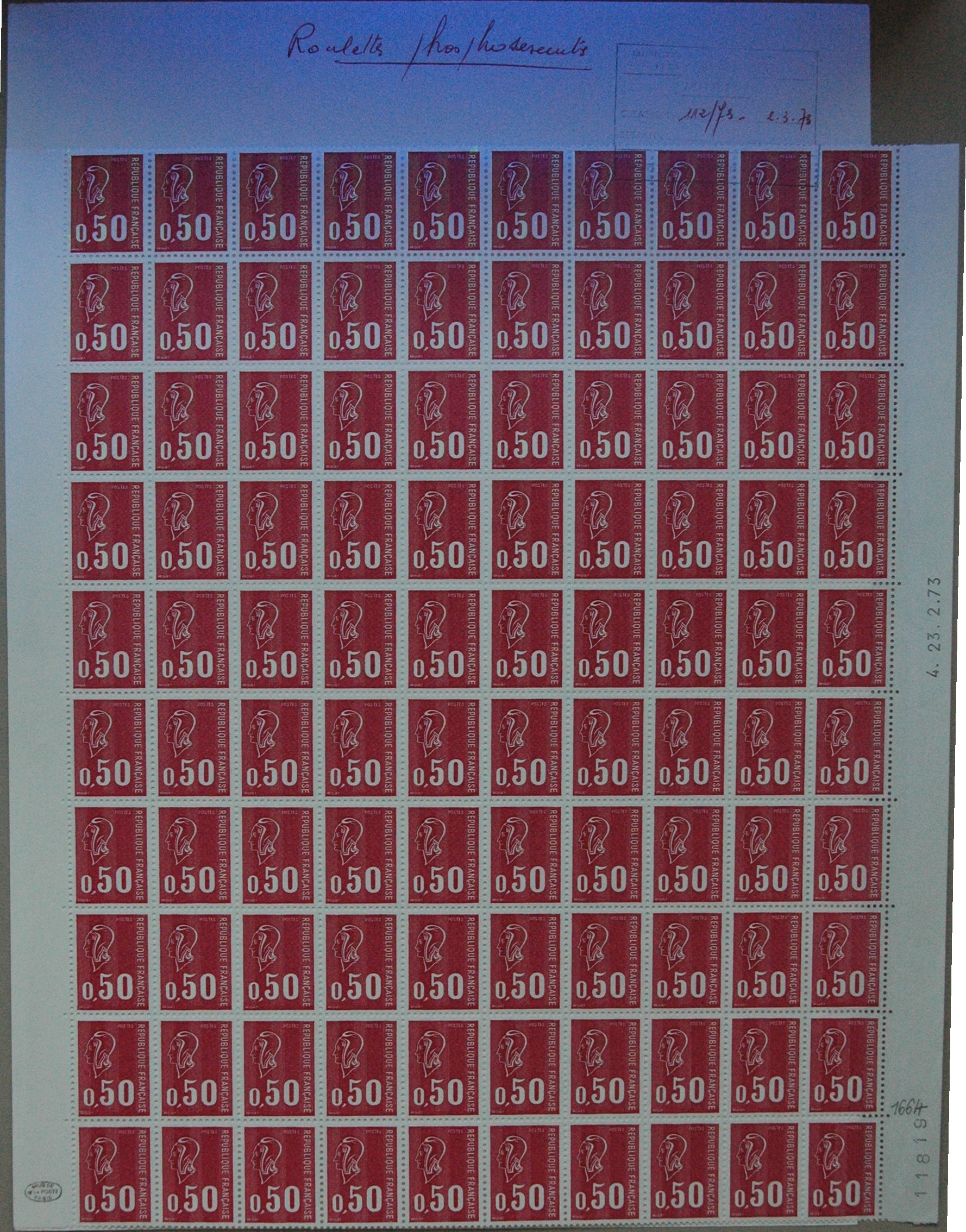
Printings of 0,50F Marianne de Béquet coils
Due to the manufacturing process of coils, it is impossible to know the dates of their printings (there is no preservation of margins). But thanks to J.J. RABINEAU’s researches (article in the “Bulletin du CAM”), it is known that there were four printings of the stamp 0,50F Marianne de Béquet through coils, all made on the press TD6-7:
1st printing
It took place at the beginning of 1971, on a bright neutral paper, without phosphor band. We can see below a strip of 11 coil stamps from this printing and a cover with a stamp from this printing:
2nd printing
This printing was produced at the end of 1971, on a grey neutral paper, without phosphor band. We can see below a strip of 11 coil stamps from this printing and a cover with a stamp from this printing:
3rd printing
It took place at the end of 1972, on a paper with optical whitener, without phosphor band. We can see below a strip of 11 coil stamps (one of which with the red number 930) from this printing and a cover with a stamp from this printing:
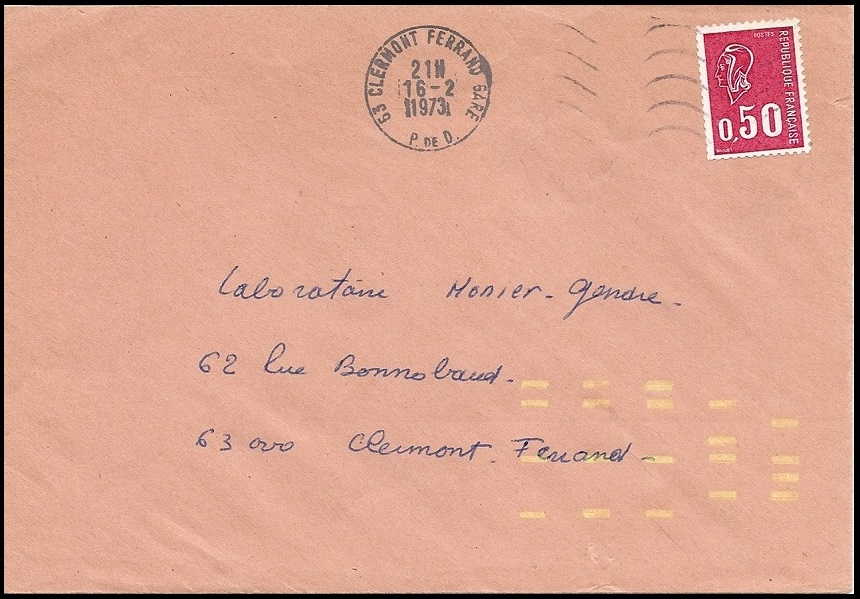
On mouse-over, we can see an enlargement of the stamp showing that perforations are vertically guillotined, which shows that the stamp comes from a coil.
Here is now a curiosity: on the left, we can see a pair of coil stamps stemming from a vending machine with an incorrect cutting and, on the right, a lettrer with such a stamp.
4th printing
It was made at the beginning of 1973, on a paper with optical whitener, with three type B phosphor bands. We can see below a strip of 11 coil stamps (one of which with the red number 500) and a pair of coil stamps, among which one with the red number 000, from this printing, and a postcard with a stamp from this printing:

On mouse-over, we can see an enlargement of the stamp showing that perforations are vertically guillotined, which shows that the stamp comes from a coil.
Finally, here is a letter with a strip of 11 coil stamps with 3 phosphor bands:
